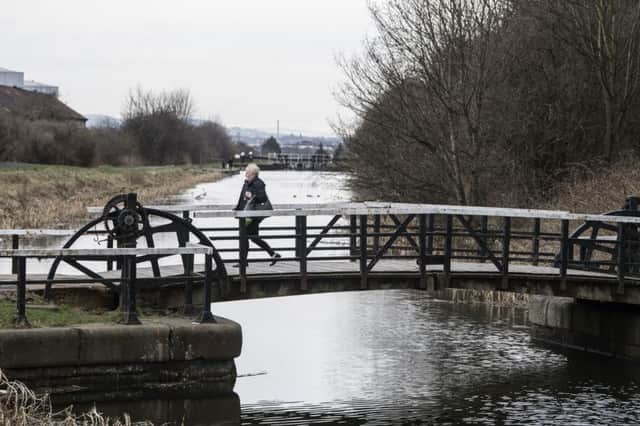Scotland's canals being '˜left to rot' as repair bills pile up


The Forth and Clyde canal, which links Bowling in West Dunbartonshire with Grangemouth in Stirlingshire, has been closed to through traffic since February as three lift bridges on the route are deemed unsafe.
Boats on the Union canal, which links Edinburgh with the showpiece Falkirk Wheel, also face disruption due to the restricted use of a bridge in the capital.
Advertisement
Hide AdAdvertisement
Hide AdThe impact means boats registered to travel the length of the Union and Forth and Clyde canals have been forced to abandon at least 35 bookings ahead of this summer.
One MSP said today the death of the direct link between Scotland’s two biggest cities, which was made possible by the multi-million pound restoration programme in the late 1990s, was a wasted opportunity.
Alison Harris tabled a series of parliamentary questions on the issue, but has yet to receive any confirmation that the canal corridor will reopen in full.
A Freedom of Information request by the Scottish Conservatives revealed 35 cancellations by holiday hire fleets had been submitted since the bridge closures.
Campaign group Keep Canals Alive have also raised a series of concerns about the state of both canals, and a lack of investment in maintenance.
Mrs Harris said: “The Union and the Forth and Clyde canals could be a tourism treasure trove for Scotland.
“In theory, they are supposed to be an artery joining Scotland’s two biggest cities, and a unique boating experience.
“Instead, that route has been left to rot, meaning it’s impossible to get the boat from Glasgow to Edinburgh.
Advertisement
Hide AdAdvertisement
Hide Ad“This is a woeful missed opportunity for tourism, and a real slap in the face to communities in central Scotland who would benefit from a vibrant and active canal.”
Boaters fear the new stretch of waterway opened at Grangemouth last year, the Queen Elizabeth II canal, could become a white elephant as sea-going vessels are unable to travel west of Bonnybridge, while the Union canal is too silted to allow sailings to the capital.
Ronnie Rusack, a member of the Keep Canals Alive campaign and chairman of the Lowlands Canals Volunteers Group, said: “We have deep concern about the progressive closure of the Forth and Clyde and Union Canals, upon which so much public money was spent reopening just a few years ago.
“Scottish Canals have not maintained the canals adequately and the lack of maintenance has driven away existing users.
“The policy of pursuing property development at the expense of keeping the canals open for navigation risks losing that community spirit and co-operation.”
A spokesman for Scottish Canals said: “We are committed to bringing these bridges back into operation as quickly as possible.
“We estimate the cost of repairing these bridges will be substantial but we have undertaken detailed investigations and are currently working up technical solutions that will help bring them back into use.
“We recently organised a controlled opening of the bridges using cranes and other lifting equipment to allow boaters who wished to travel through them to get to where they needed to be.
Advertisement
Hide AdAdvertisement
Hide Ad“An average of 80 vessels transit the canal coast-to-coast each year, although last year this figure was 50. The vast majority of canal users, from runners and walkers to cyclists and kayakers, will be completely unaffected by these restrictions.”